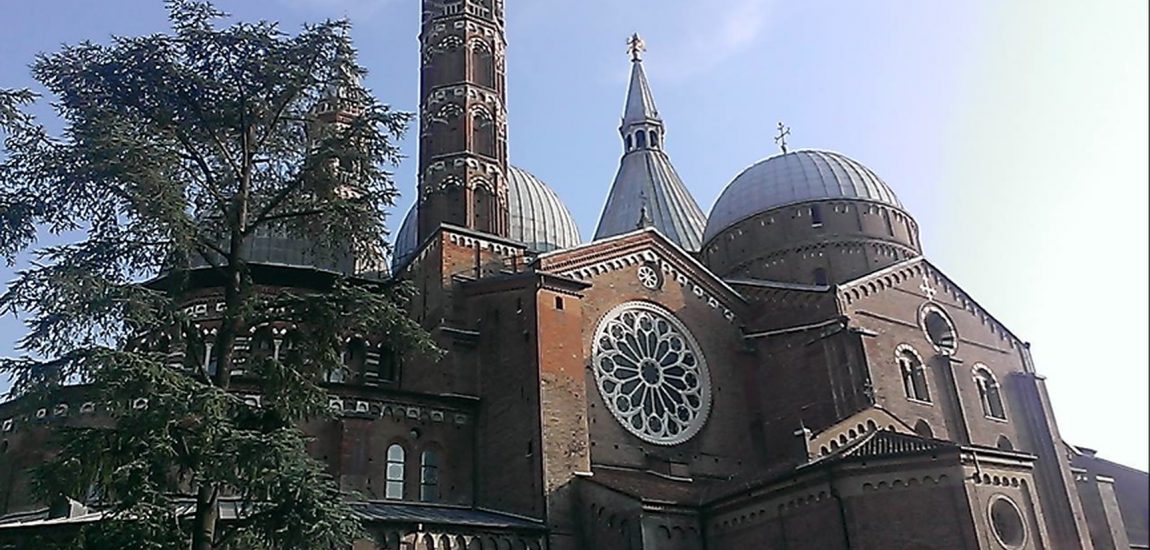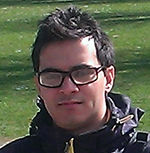
Impressions from InterPore 2015
Reza Gooya, who received sponsorship from the EAG through the Student Sponsorship Program, attended the InterPore 2015 Conference for the first time and recounts his experience.
The 7th international conference on porous media and its applications was held by Interpore society on 18-21 May in Padua, Italy. Interpore was founded in 2008 as a non-profit independent scientific organization, with the aim of advancing knowledge for understanding, describing, and modeling natural and industrial porous media.
Porous media are encountered in many natural and industrial systems, such as soils, aquifers, oil and gas reservoirs, fuel cells, concrete, textiles, polymer composites. Interpore acts as an international platform for researchers that are active in modeling flow and transport in complex porous media. The interesting fact about this society is its multidisciplinary environment with people from academia and industry with different backgrounds.
We (I and 4 of my colleagues) arrived in Padua on Sunday 18 May. Padua as a beautiful city with an amazing old town surrounded by historical buildings. Padua claims to be the oldest city in northern Italy. The most outstanding in Padua was the Basilica di Sant’Antonio da padua, locally known as “ll Santo”.
The conference started on Monday and ended on Thursday in congress center “A. Luciani”, a location big as enough to gather about 800 scientists from all around the world. The conference included about 300 oral contributions, 250 poster presentations and 30 invited talks. In geology, most subjects were new challenging areas like multiphase flow and reactive flow in complex shale and carbonate reservoirs. These types of reservoirs with low permeability and high heterogeneity are still not completely known to scientists.
One of the first day’s highlights was a keynote lecture by S. Berg, a pioneer in pore scale phenomena, from Shell international exploration and production. First day talks were mostly about digital rock physics and its applications in the industry, and lasted until 20:30 which made it a long day for those who arrived that morning. As this conference is held one year in Europe and one year in the USA, most of the participants came from European universities but some came from Asia and the USA.
The second day featured another keynote lecture from Y. Efendiev about up scaling, followed by several oral presentations about dynamic and nonlinearities in porous systems, including my talk. It certainly was a good experience to present my results in front of a panel of experts and discuss problems and solutions. I also had the opportunity to meet people from the industry to get a better view of industrial applications of my work.
Oral presentations, posters and talks by invited speakers continued on the third day, which also included a Gala dinner and award ceremony in the Centro Culturale San Gaetano. We certainly enjoyed the delicious Italian dinner.
The last day’s general topic was reactive transport in porous media and different works about effect of chemistry on the fluid flow in porous systems such as sessions with the title of “Computational challenges in simulating reactive flows in deformable porous media” and “Mixing and Reaction in Permeable Media from Pore to Continuum Scale”. The many talks I attended were useful for my understanding of fluid-surface interactions and their effects on the dynamic properties of flow in porous media.
One important concept I observed was a large gap between the interpore community and chemical aspects of porous media. Most scientists have expertise in fluid flow in complex geometries but not a high knowledge of chemistry. Most use chemistry as a simple formula without understanding the reasoning behind it. Chemistry has an important effect on processes in porous media because most of the porous materials like rocks are reactive when a solution migrates into it. Therefore considering the chemical reactions can increase the insights about fluid flow into porous systems.
I can say that I returned to Copenhagen with lots of notes from my discussions and oral presentations, which certainly provide food for thought. I also now have more insights about what I did, what I am doing and what I will do. Moreover, I made new friends who are working on the same subject, which can be helpful in the near future. All in all I think it is a useful conference for whoever works in porous media discipline.
Acknowledgements:
I would like to thank the European Association of Geochemistry and CO2 REACT project of seventh framework programme of the European Union for the funding provided.
About the author

Reza Gooya is a PhD student in the NanoGeoScience group in the Nano-Science Center at the University of Copenhagen and he is supervised by Susan L.S. Stipp. His background is chemical engineering and he is currently working on the reactive fluid flow with CFD modelling and X-ray tomography experiments.
